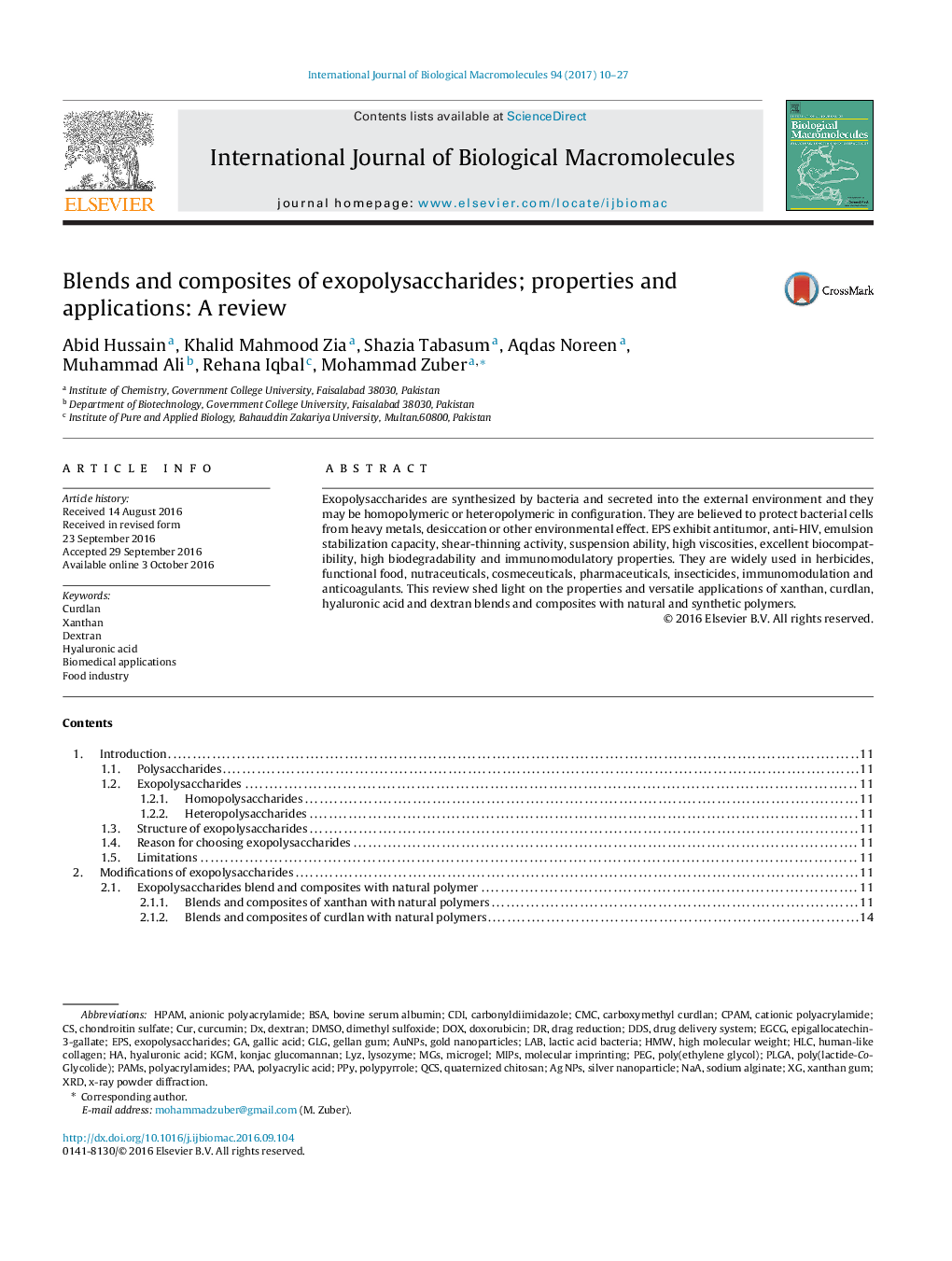| Article ID | Journal | Published Year | Pages | File Type |
|---|---|---|---|---|
| 5512471 | International Journal of Biological Macromolecules | 2017 | 18 Pages |
â¢Exopolysaccharides, believed to protect bacterial cells from environmental aspects and to produce biofilm.â¢Exopolysaccharides show antitumor, anti-HIV and immunomodulatory properties.â¢Significant emulsion stabilization, shear-thinning, suspension-ability, high viscosities, excellent biocompatibility biodegradability.â¢Used in herbicides, foods, nutraceutical, cosmeceutical, pharmaceuticals, insecticides, immunomodulation and anticoagulants.â¢Review shed light on xanthan, curdlan, hyaluronic acid and dextran; blends and composites with natural and synthetic polymers.
Exopolysaccharides are synthesized by bacteria and secreted into the external environment and they may be homopolymeric or heteropolymeric in configuration. They are believed to protect bacterial cells from heavy metals, desiccation or other environmental effect. EPS exhibit antitumor, anti-HIV, emulsion stabilization capacity, shear-thinning activity, suspension ability, high viscosities, excellent biocompatibility, high biodegradability and immunomodulatory properties. They are widely used in herbicides, functional food, nutraceuticals, cosmeceuticals, pharmaceuticals, insecticides, immunomodulation and anticoagulants. This review shed light on the properties and versatile applications of xanthan, curdlan, hyaluronic acid and dextran blends and composites with natural and synthetic polymers.
